

Switch, PC
I love me a high concept pitch. Combat-focused action Breakout certainly does the job. And how! Because despite its absolutely dreadful name, Strikey Sisters is rather compelling fun.
In a better universe, where Arkanoid games came out every year with the same clamour and acclaim as Call Of Duty, we’d long ago have had a game like Strikey Sisters. (Gah, typing out that horrible title makes me want to fix something.) It’s an inevitability of evolution. Replace the bat with a gobby young girl, add monsters, quadruple the power-ups. Honestly, just plot a graph with Arkanoid, Revenge Of Doh, Doh It Again and Arkanoid Returns, and then extrapolate. I’ll wait.

See!
So here we are. There’s a map, there are four levels to choose from at the start, and there’s a compulsion to keep replaying each of them until you’ve cleared every brick and boshed every baddie, gathered as many coins as you can, and moved on to the next.

There are a bunch of reasons why this works. First of all, if you’re old like me, you’ll remember the late ’90s when oh-so-bloody many Breakout clones came out, using awful sheeny shiny graphics, metallic looks to everything, in the mistaken belief that this would look sci-fi and break our minds with ray-traced excitement. Sisters, as I shall comfort myself by abbreviating it, does away with all of that, and instead opts for a comfortable bog-standard pixels-but-made-this-century look.
Secondly, the enemies aren’t just thrown in there. What could have been a brick breaker with extra obstacles is instead a much smarter affair, with a more roguelite mentality. Each enemy type attacks in its own ways, and is vulnerable in different ways. There are those that can only be attacked from behind, meaning your bouncy ball must hit them on the way down the screen, not up it. Others launch volleys of distinct attacks that can be defended against by your character’s whacky stick, or carefully dodged. And once they get close enough to the bottom of the screen, you can attack the buggers yourself.

All of this means you’re constantly gambling your position on the screen. Where you might be used to Breakout clones offering bonus drops, and that dilemma of trying to catch it before zooming across the screen to get the ball before it drops, here with so much more going on that becomes a much more interesting proposition. You might be in hand-to-hand fisticuffs with an eyeball, trying to blat it before it explodes fireballs in all directions, while seeing a fall of coins to your right, and an iron ball power-up falling to the left, all while trying to judge in which direction the ball’s going to eventually come down.
Some power-ups offer immediate effects, like a shield, or a second ball. Others are used at will, like launching great big columns of fire, or chucking smart bombs at all the enemies on screen. And then on top of all this, you can power up your whacking, by taking advantage of seconds of respite to charge your bat (I’m guessing she’s holding a bat. It’d seem grossly wrong if it weren’t) to hit the ball extra-super-hard. Which is something you want to judge carefully, because if you aim it into something too low down, it’s going to come back at you awfully hard.

Enemies respawn into the level until all the bricks are cleared, and then the stragglers are taken out to complete the room. That done you can move your sister on further down the line she’s currently taking on the map. And there are sisters plural because you can also approach this in co-op – something I’ve not been able to test.
Everything is narrated with old-school arcade declarations of “DOUBLE BALL!” and “ENERGY SHOT!” and “LOST BALL!” This really suits the arcade machine feel to the whole game, because what were arcade machines if not the first roguelites, endlessly demanding that you restart the game over and have another try?

What’s a real shame here is that each levels’ coins aren’t actually for anything. Collect more than 70% in a level and there are secrets to unlock, but that’s one hell of a task to do. And though despite the game keeping count of how many you’ve picked up across all the levels, there’s nowhere to actually spend them. I was pretty gutted when I realised that as far as I was getting, no shop was showing up.
It feels like such an enormously missed opportunity. It’d be so great if you could unlock extra abilities, or perhaps more starting balls (the game’s three can be replenished during a level, but it’s always three), or even just cosmetic nonsense for the characters. I really assumed there’d be some roguelite element here, where I could improve my character and then return to those earlier levels to improve coin collection, or go back to a previous boss I couldn’t beat. Sadly none of that appears, and it feels like a great gaping hole in the game.

Still, I do rather like this. That expectation put aside, it really does deliver on the concept of Breakout-with-baddies. It’s smart about how it asks you to approach enemies, the boss fights aren’t colossal difficulty walls, and if you’re stuck on any branch, there are three other directions to head in at any time. It’s nicely presented, there’s some garish voice acting that completely fits the part, and I unquestionably want to immediately replay after every loss. Which is perhaps the most important element of all. Now if only it didn’t have that god-awful name…
This older PC version is currently on sale at half price on Steam until the 18th January, which makes it a great time to pick it up if you’re reading this in time.
- DYA Games
- Switch, Steam, Itch, Kartridge
- $10
- Official site
All Buried Treasure articles are funded by Patreon backers. If you want to see more reviews of great indie games, please consider backing this project.



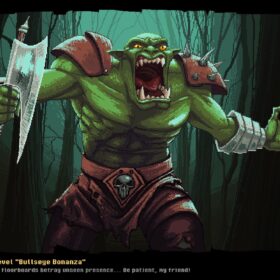



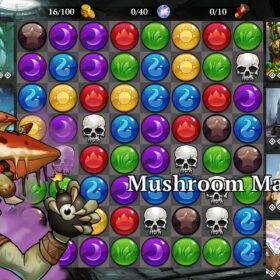
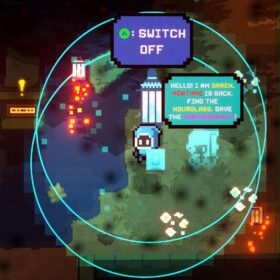
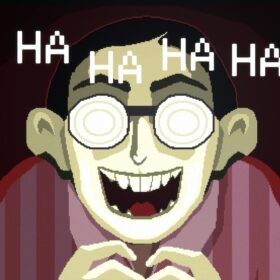




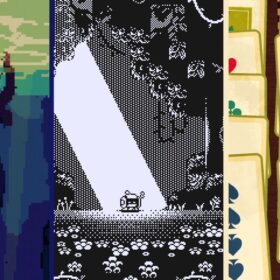
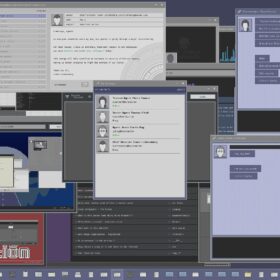


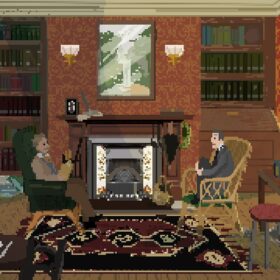
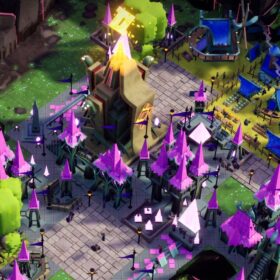
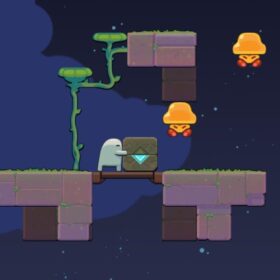


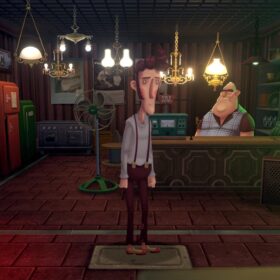
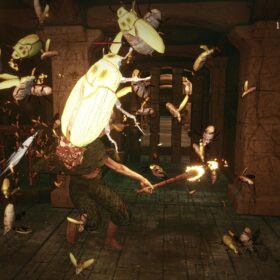

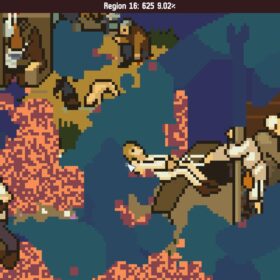
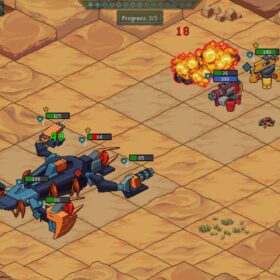

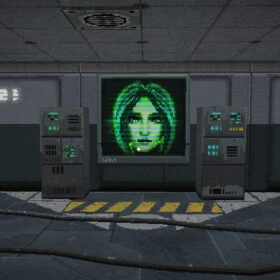

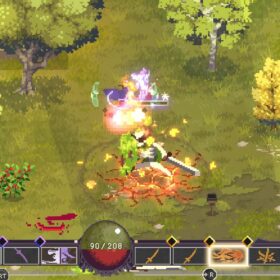
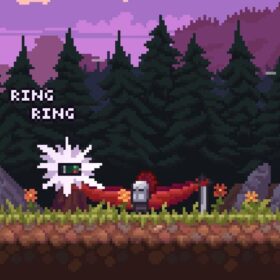

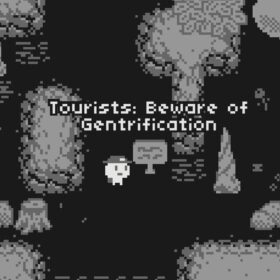


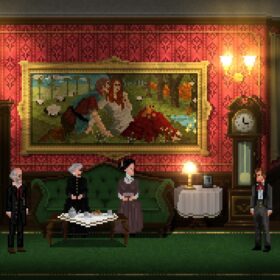

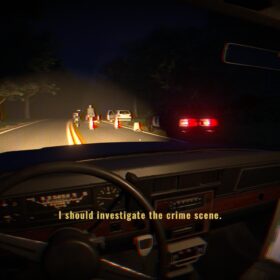
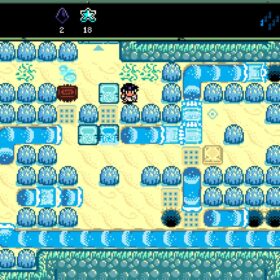
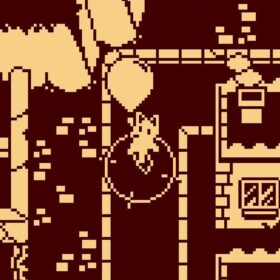
The concept and pixel art remind a lot of Wizorb.
Which makes me a bit nervous to try this, because that game never quite clicked for me.